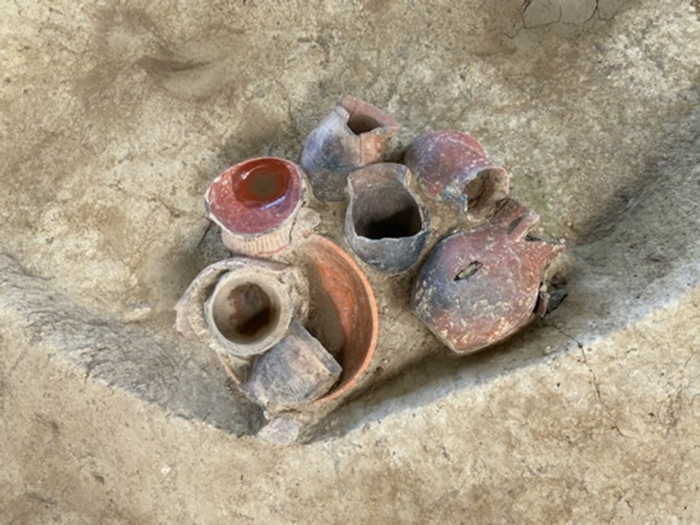Ancient pottery unearthed in China reveals 9000-year-old rice beer recipe
Archaeologists say the unearthed vessels are some of the earliest known painted pottery in the world

Your support helps us to tell the story
From reproductive rights to climate change to Big Tech, The Independent is on the ground when the story is developing. Whether it's investigating the financials of Elon Musk's pro-Trump PAC or producing our latest documentary, 'The A Word', which shines a light on the American women fighting for reproductive rights, we know how important it is to parse out the facts from the messaging.
At such a critical moment in US history, we need reporters on the ground. Your donation allows us to keep sending journalists to speak to both sides of the story.
The Independent is trusted by Americans across the entire political spectrum. And unlike many other quality news outlets, we choose not to lock Americans out of our reporting and analysis with paywalls. We believe quality journalism should be available to everyone, paid for by those who can afford it.
Your support makes all the difference.Archaeologists have unearthed evidence of alcohol consumption 9,000 years ago at an ancient burial site in southern China, shedding light on what could be one of the earliest known instances of ritual beer drinking to honour the dead.
According to the researchers, including Jiajing Wang from Dartmouth College in the US, this kind of ritual drinking 9,000 years ago may have played an important role in “maintaining social relationships and paving the way for the rise of complex farming societies four millennia later”.
In the study, published last week in the journal PLOS ONE, the scientists unearthed some of “the earliest known painted pottery in the world”, of which some were also decorated with abstract designs.
The pottery were found in a platform mound – 80m x 50m wide, with an elevation of 3 m above ground level – surrounded by a human-made ditch.
“No pottery of this kind has been found at any other sites dating to this time period,” the scientists noted in a statement.
Each of the pots, the archaeologists say, could be held in one hand like a cup unlike storage vessels, which are much larger in size.
Seven of the 20 vessels appeared to be long-necked Hu pots which were used to drink alcohol in later historical periods, the study noted.
The scientists then analysed the fossil residues extracted from the surface of the pots, and compared them with control samples obtained from soil surrounding the vessels.
They identified starch granules, fossilised remains of rice husks, other plants, mould, and yeast residues in the pots – consistent with residues from beer fermentation and not found naturally in soil or in other artefacts unless they had contained alcohol.
The mould found in the pots at Qiaotou is very similar to that which is present in koji, which is used to make sake and other fermented rice beverages in East Asia, the researchers explained.
According to the archaeologists, the findings predate earlier research, which found that mould had been used in fermentation processes 8,000 years ago in China.
“Through a residue analysis of pots from Qiaotou, our results revealed that the pottery vessels were used to hold beer, in its most general sense – a fermented beverage made of rice (Oryza sp.), a grain called Job’s tears (Coix lacryma-jobi), and unidentified tubers,” Ms Wang said in a statement.
“This ancient beer though would not have been like the IPA that we have today. Instead, it was likely a slightly fermented and sweet beverage, which was probably cloudy in colour,” she added.
The archaeologists add that making the fermented beverage may not have been easy, since rice crops were still in their early phases of domestication during this time 9,000 years ago.
They believe most communities of this time were hunter-gatherers who relied primarily on foraging and the beer made at Qiaotou was likely a ritually significant beverage.
“We don’t know how people made the mould 9,000 years ago, as fermentation can happen naturally. If people had some leftover rice and the grains became mouldy, they may have noticed that the grains became sweeter and alcoholic with age,” Ms Wang said.
“While people may not have known the biochemistry associated with grains that became mouldy, they probably observed the fermentation process and leveraged it through trial and error,” she added.
Join our commenting forum
Join thought-provoking conversations, follow other Independent readers and see their replies
Comments